Unlock the Power of Exploratory Testing in Software Development
In today’s fast-paced software landscape, ensuring quality is more critical than ever. Exploratory testing empowers teams to adapt quickly and discover issues that scripted tests might miss. This article explores the essential role of exploratory testing, highlighting its advantages and providing practical insights for implementation.
📌 Why Read?
- Grasp exploratory testing definition without jargon
- Uncover its edge over traditional methods.
- Get actionable tips for exploratory testing sessions.
📌 What You’ll Learn:
- Exploratory Testing 101: Its role in fast-paced development.
- Versus Traditional Testing: Why it’s different and better.
- How to Implement: Practical strategies and real-time tips.
- Real-World Impact: How top companies use it for quality.
- The Future: Innovations like automated exploratory testing and AI-driven exploratory testing tools.
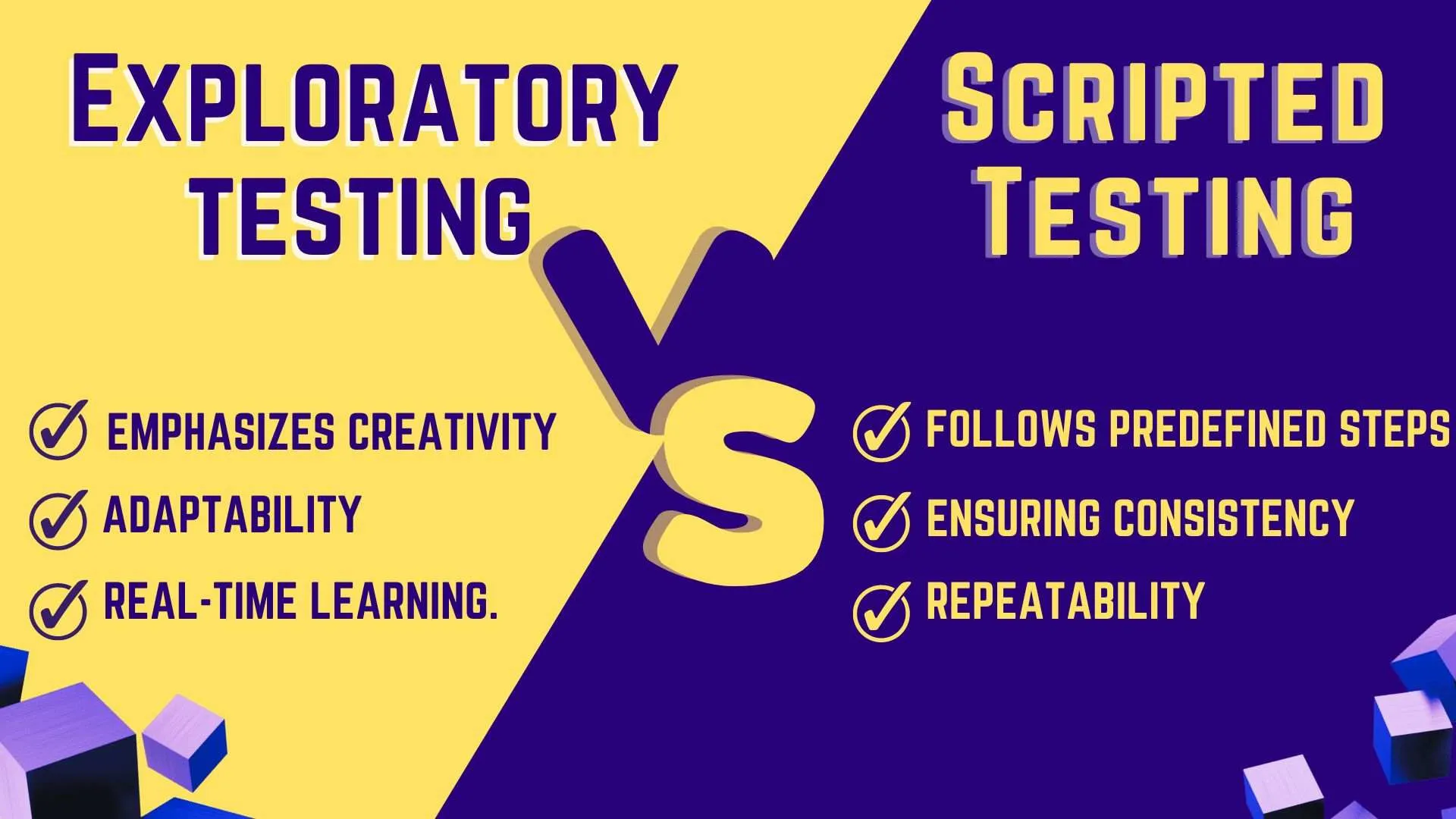
What are the different Types of Software Testing?
Software testing is a critical part of the software development process, ensuring that applications function correctly and meet specified requirements. Here’s a breakdown of the different types of software testing:

1. Manual Testing
- Exploratory Testing: Testers actively explore the application without predefined test cases, focusing on finding defects through intuition and experience.
- Ad-Hoc Testing: Informal testing without planning or documentation, often performed by skilled testers to uncover issues quickly.
2. Automated Testing
- Unit Testing: Testing individual components or modules of the software to ensure they work as expected.
- Integration Testing: Testing the interaction between different modules or components to identify interface defects.
- Functional Testing:: Validating software against functional requirements using tools like JIRA exploratory testing plugins.
- Regression Testing: Ensuring new updates don’t introduce bugs, often complemented by automated exploratory testing.
3. Non-Functional Testing
- Performance Testing: Evaluating system performance under various conditions, including discovery testing for scalability..
- Security Testing: Assessing the software for vulnerabilities, threats, and risks to prevent malicious attacks.
- Usability Testing: Testing the software’s user interface and user experience to ensure it is easy to use and meets user expectations.
- Compatibility Testing: Ensuring the application works across different devices, browsers, and OS.
4. White-Box Testing
- Statement Testing: Testing the execution of each statement in the code.
- Branch Testing: Testing all the possible paths and branches in the code, ensuring that each one is executed at least once.
5. Black-Box Testing
- Equivalence Partitioning: Dividing input data into equivalent partitions and testing one from each to reduce the total number of test cases.
- Boundary Value Analysis: Testing the boundaries between partitions, as errors often occur at the edges of input ranges.
6. Acceptance Testing
- User Acceptance Testing (UAT): Performed by the end-users to ensure the software product meets their needs and requirements before going live.
- Alpha and Beta Testing: Alpha testing is performed in-house by testers, while beta testing is conducted by actual users in a real-world environment.
7. Localization and Globalization Testing
- Localization Testing: Ensuring that the software works correctly in different languages and locales.
- Globalization Testing: Verifying that the software can be adapted to various regions and cultures without requiring changes to the code.
What is Exploratory Testing?
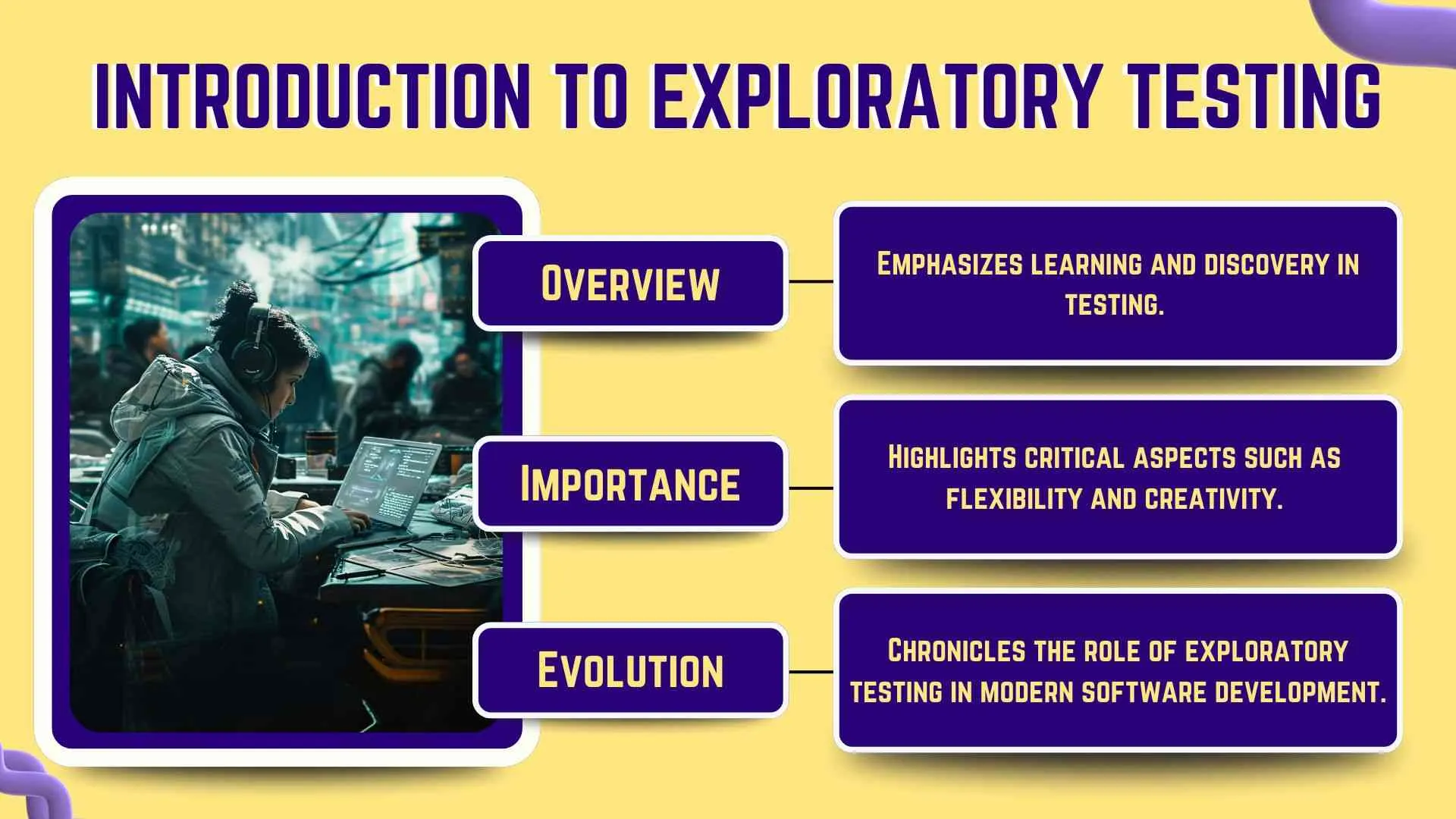
Exploratory Testing is a dynamic and flexible approach to software testing where the tester actively explores the application without following predefined steps. Instead of adhering to a script, the tester uses their experience, intuition, and creativity to identify bugs, inconsistencies, and potential issues in real-time. 🎯
Key Characteristics of Exploratory Testing:

- Simultaneous Learning and Testing: As you explore the application, continuous learning occurs, allowing you to gain insights into the application's behavior. This deeper understanding helps in identifying new areas to test based on evolving project requirements. 🧠🔍
- No Predefined Test Cases: Unlike traditional testing methods, exploratory testing doesn’t rely on a set of pre-written test cases or predefined steps. Instead, testers create and execute tests on the fly, adapting to the application's behavior and the project's unique business goals. 🚀
- Focus on Discovery: The primary goal is to uncover unexpected issues, edge cases, and usability problems that may not be captured by automated tests or traditional methods. This approach is especially crucial in adhering to agile principles, where the ability to quickly adapt to changing requirements is vital. 🕵️♂️
- Adaptive and Iterative: Exploratory testing is highly adaptive. As you test, you continuously refine your strategy based on what you discover, often diving deeper into areas where bugs or issues are found. This iterative process ensures that testing aligns with the project's time limits, budget constraints, and overall objectives. ♻️
Does Software Development Need Exploratory Testing? 🤔

Absolutely! Exploratory Testing plays a vital role in modern software development by offering unique benefits that traditional testing methods might miss. It provides a more flexible, human-centric approach to testing, allowing testers to think critically and creatively. Here's why it's essential:
- Uncover Hidden Defects: Exploratory testing can reveal issues that structured tests might overlook, especially in complex or less-understood areas of the application.
- Adapt to Change: In agile environments where requirements and features evolve rapidly, exploratory testing allows for quick adaptation without being bogged down by outdated test cases.
- Enhance User Experience: By focusing on real-world usage and scenarios, exploratory testing helps ensure that the software not only functions correctly but also provides a positive user experience.
- Complement Other Testing Methods: While automated and scripted tests are important, exploratory testing adds an additional layer of scrutiny that can catch edge cases and unexpected behaviors.
In essence, exploratory testing is a critical component of a well-rounded testing strategy, helping to ensure that software is both functional and user-friendly. 🚀
Exploratory Testing Techniques for Efficient Development🛠️
Exploratory Testing is not just about random clicks; it's a strategic approach that can be made even more effective by using specific techniques. Here are four key exploratory testing techniques that can enhance your development process:

1. Session-Based Testing ⏳

- What It Is: A structured approach to exploratory testing where testing is divided into time-boxed sessions, each with a specific goal or focus.Structured, time-boxed exploratory testing sessions with specific goals.
- How It Helps: Keeps the testing process organized and ensures that key areas of the application are thoroughly explored within a set time frame. After each session, testers document their findings, helping track progress and coverage.
2. Mind Mapping 🧠
- What It Is: Creating visual maps that outline test ideas, potential areas to explore, and possible scenarios.
- How It Helps: Mind maps provide a clear overview of the testing scope, helping testers brainstorm and prioritize areas that need attention. It’s a great way to ensure that no critical path or feature is left unexplored.
3. Pair Testing 🤝
- What It Is: Two testers (or a tester and a developer) collaborate in real-time to explore the application together.
- How It Helps: Combining different perspectives and expertise can lead to the discovery of more complex issues. Pair testing also promotes knowledge sharing and can be particularly effective in identifying edge cases or complex scenarios, ensuring a comprehensive understanding of the application.
4. Bug Taxonomies 🐞
- What It Is: Using a predefined list of common bug types or categories as a guide during testing.
- How It Helps: By focusing on known problem areas, testers can systematically explore the application, increasing the chances of finding similar issues. This approach helps in covering various aspects of the application, from security vulnerabilities to performance bottlenecks, leading to better feedback to developers and improved software quality.
Popular Exploratory Testing Tools
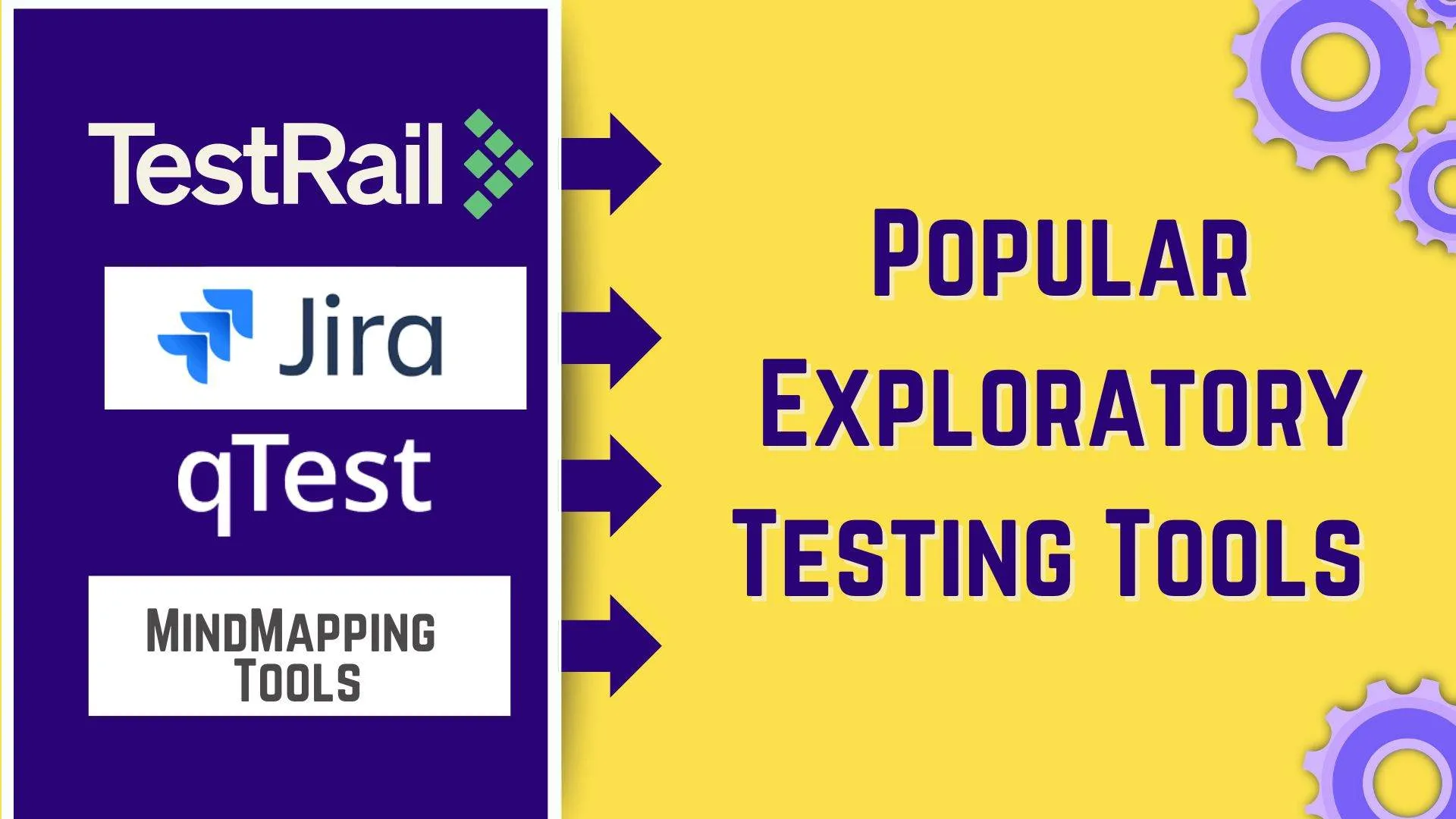
Exploratory Testing is most effective when supported by the right tools, especially within Agile development environments. Exploratory testing tools enhance the process by documenting findings and improving collaboration.These tools help testers document their findings, track progress, and enhance the overall testing process. Effective defect detection during the development phase can prevent costly issues later on, ensuring that minor issues are addressed early.
Here are some popular tools that are widely used in exploratory testing:
- TestRail 📊
Overview: TestRail is a comprehensive test management tool that supports exploratory testing by allowing testers to document their sessions, create detailed test cases, and track test results. It integrates well within Agile development teams, enabling simultaneous test design and execution.
Key Features: Session-based test management, real-time reporting, integration with bug tracking tools like JIRA.
- JIRA Capture (formerly Zephyr Capture) 📸
Overview: JIRA Capture is a browser extension that integrates with JIRA, allowing testers to capture screenshots, record steps, and create detailed bug reports directly from their exploratory sessions. It’s a crucial tool in Agile development methodologies, enabling quick defect detection and reporting during the development phase.
Key Features: Screenshot capture, step recording, seamless integration with JIRA for easy bug tracking.
- qTest Explorer 🔍
Overview: qTest Explorer automatically captures your actions during testing, making it easy to reproduce bugs and generate detailed documentation. It supports simultaneous test design and helps streamline the development process in Agile environments.
Key Features: Automated screenshot capture, session recording, instant bug reporting.
- Mind Mapping Tools 🧠
Overview: Tools like XMind and MindMup help testers create visual representations of their test ideas and strategies, enhancing brainstorming and coverage during exploratory testing. These tools are particularly useful during the simultaneous test design phase, allowing for better planning and organization.
Key Features: Easy mind map creation, collaboration features, integration with other testing tools.
Best Practices for Testing Software in Exploratory mode
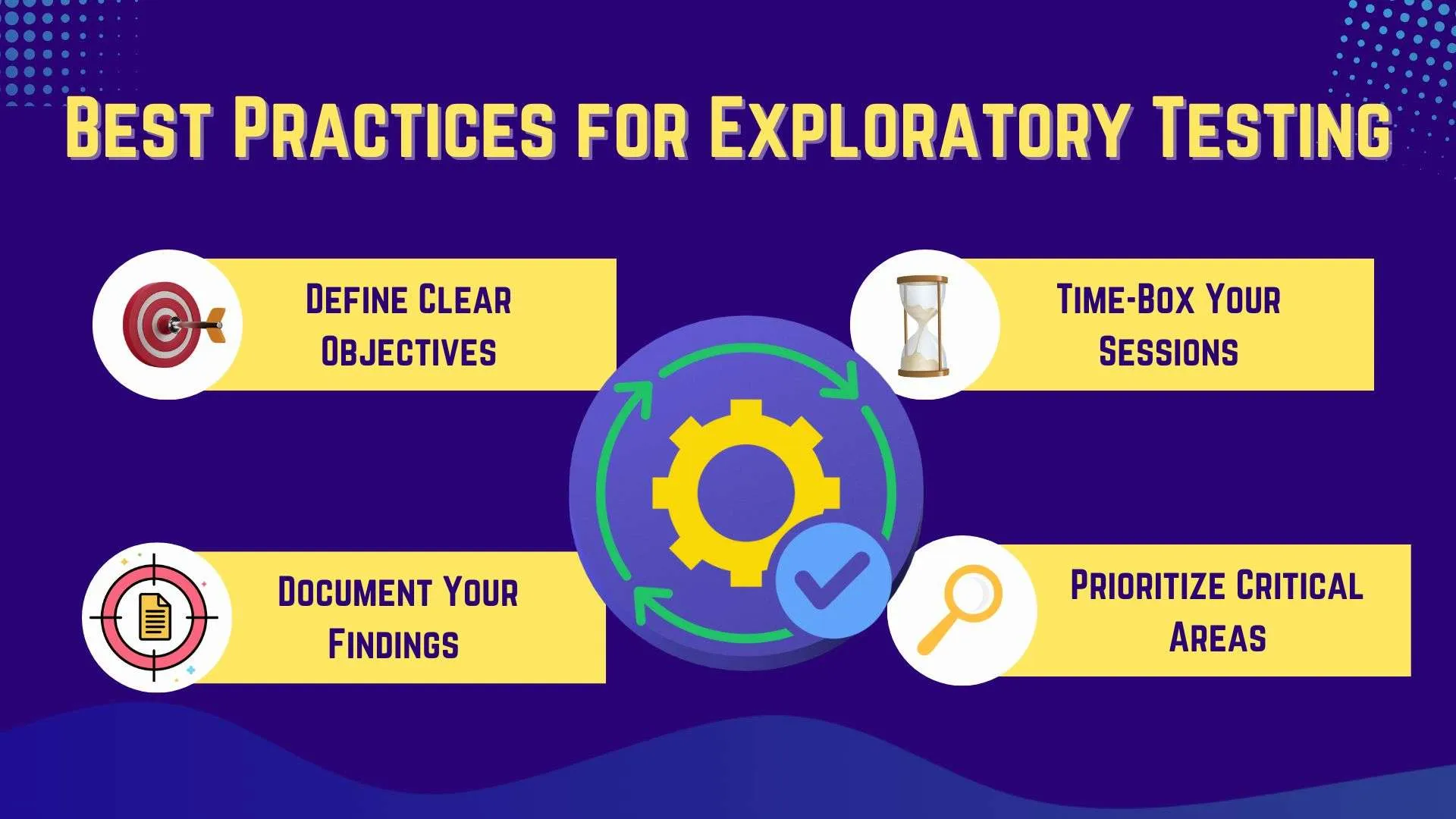
Exploratory Testing is a powerful approach, but to get the most out of it, it's important to follow some best practices. Here’s how you can ensure your exploratory testing sessions are both effective and efficient:
Define Clear Objectives 🎯
- Set specific goals for each exploration test, such as identifying critical bugs or testing new features. Clear objectives help maintain focus and ensure your exploration is purposeful, providing valuable feedback and contributing to software quality.
Time-Box Your Sessions ⏳
- Limit sessions to ensure productivity and align with exploratory test management best practices. Time-boxing keeps sessions productive and prevents them from dragging on, ensuring you make the most of your testing effort. This structured approach helps manage time effectively and aligns with agile methodology principles.
Document Your Findings 📝
- Keep detailed notes on what you discover during testing. Use tools like exploratory testing for JIRA or TestRail to record observations and share insights. Documenting your findings helps track progress, share insights with your team, and ensure a deep understanding of potential defects.
Prioritize Critical Areas 🔍
- Focus on high-risk parts of the application, such as new features or recent updates. Prioritizing these areas ensures you address the most critical aspects first, enhancing user satisfaction and maximizing the impact of your exploratory testing.
Significance of Exploratory Testing in Agile Methodologies
In Agile environments, where adaptability and quick feedback are essential, Exploratory Testing plays a vital role:
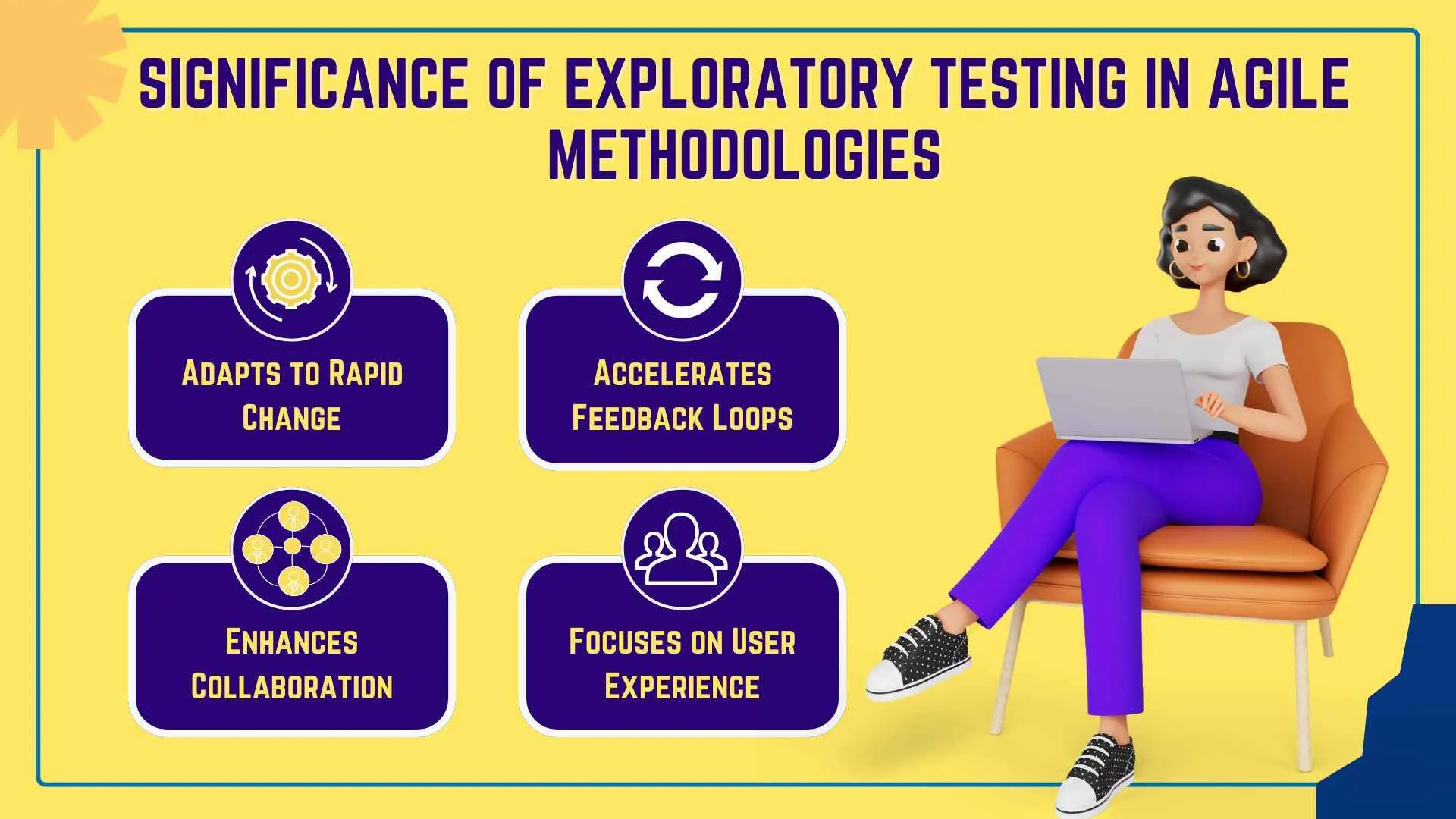
- Adapts to Rapid Changes 🔄
Agile projects often undergo frequent updates and shifts in direction. Exploratory Testing allows testers to quickly adapt to these changes, exploring new features on the fly without being restricted by predefined test cases.
- Accelerates Feedback Loops 🔁
Agile thrives on continuous feedback and iteration. Exploratory Testing fits seamlessly into this cycle, providing immediate insights into potential issues. This real-time feedback helps developers address problems faster, leading to quicker, more efficient releases.
- Enhances Collaboration 🤝
Agile promotes close collaboration among team members. Exploratory Testing encourages testers to work closely with developers, deepening their understanding of new features and identifying potential problem areas that might be missed by traditional testing methods.
- Focuses on User Experience 👥
Agile is all about delivering value to the end-user. Exploratory Testing aligns with this testing goal by simulating real-world scenarios and use cases, ensuring that the product not only functions correctly but also provides a seamless and satisfying user experience.
Software Development Challenges in Exploratory Testing
Exploratory Testing is a powerful tool in the software development process, but it also comes with its own set of challenges. These challenges can impact both the effectiveness of the testing and the overall development process.

Here’s a look at some of the key challenges developers and testers might face when implementing Exploratory Testing:
1. Lack of Documentation 📄
Since Exploratory Testing is unscripted and dynamic, it often lacks the detailed documentation that comes with traditional testing methods. This can make it difficult to track what has been tested, what issues were found, and how they were resolved.
2. Reliance on Tester Skill and Experience 🎓
Exploratory Testing heavily depends on the tester’s knowledge, intuition, and experience. Less experienced testers may struggle to identify critical issues or may not explore the software as thoroughly as needed.
3. Difficulty in Measuring Coverage 📊
Measuring test coverage in Exploratory Testing is challenging because there are no predefined test cases to track. It’s hard to quantify how much of the application has been tested and whether all critical paths have been explored.
4. Time Management ⏰
Exploratory Testing can be time-consuming, especially when testers dive deep into specific areas of the application. Without time-boxing, sessions can extend beyond their intended scope, leading to inefficiencies.
Emerging Trends in Exploratory Testing

Exploratory Testing continues to evolve as software development practices advance. New tools, methodologies, and approaches are shaping how exploratory testing is conducted, making it more effective and aligned with modern development needs. Here are some emerging trends in Exploratory Testing:
Exploratory Testing continues to evolve as software development practices advance. New tools, methodologies, and approaches are shaping how exploratory testing is conducted, making it more effective and aligned with modern development needs. Here are some emerging trends in Exploratory Testing:
1. Increased Integration with Automation 🤖
- The Trend: While Exploratory Testing is inherently a manual process, there’s a growing trend to integrate it with automation. Automated tools can handle repetitive tasks, allowing testers to focus more on creative exploration.
- Why It Matters: This hybrid approach leverages the strengths of both manual and automated testing, increasing overall efficiency and coverage. For example, automated scripts can prepare the system’s state, which testers can then explore more deeply.
2. Session-Based Test Management (SBTM) 📅
- The Trend: Session-Based Test Management (SBTM) is gaining popularity as a structured approach to manage and document Exploratory Testing sessions. SBTM provides a framework for time-boxing sessions and capturing important details about the testing process.
- Why It Matters: SBTM enhances the accountability and traceability of Exploratory Testing, making it easier to report findings, track progress, and ensure comprehensive coverage.
3. AI-Powered Testing Tools 🧠
- The Trend: The integration of Artificial Intelligence (AI) into testing tools is revolutionizing how Exploratory Testing is performed. AI can assist in identifying potential test areas, predicting bugs, and even generating test data based on patterns learned from previous tests.
- Why It Matters: AI-powered tools enhance the tester’s capabilities, making Exploratory Testing more efficient and targeted. These tools can guide testers to focus on high-risk areas, improving the effectiveness of their exploration.
4. Collaboration and Pair Testing 🤝
- The Trend: Pair testing, where two testers work together or where a tester collaborates with a developer, is becoming more common. This collaborative approach leverages the strengths and perspectives of both participants, leading to more thorough testing.
- Why It Matters: Pair testing fosters communication and knowledge sharing, helping uncover issues that might be missed by an individual tester. It also encourages a shared understanding of the application among team members.
Conclusion
Incorporating exploratory testing activities into the development cycle allows testing teams to identify critical issues and uncover critical defects that may be overlooked by traditional testing processes. By focusing on user personas and user stories, exploratory testers leverage their domain knowledge and critical thinking to gain a fresh perspective on the software. This type of testing is not bound by the limitations of structured testing methods or functional test scripts, which makes it ideal for addressing areas with rapidly evolving requirements. The flexibility of exploratory testing sequences provides comprehensive coverage, ensuring that even the smallest edge cases are examined.
Led by industry experts like Cem Kaner, exploratory tests offer experienced testers and testing teams an opportunity to engage deeply with the application, yielding valuable rapid feedback that drives improvement. These exploratory testers excel at spotting critical defects while complementing the more predictable results achieved through scripted tests. Ultimately, incorporating exploratory testing fosters a collaborative environment where testing practices evolve, resulting in comprehensive test coverage that benefits both the product and its users.
People also ask
👉Can Exploratory Testing be Automated?
No, Exploratory Testing cannot be fully automated as it relies on human intuition and creativity to explore and identify issues.
👉Can Exploratory Testing uncover usability issues in software?
Yes, Exploratory Testing is effective in uncovering usability issues by simulating real user interactions.
👉When should Exploratory Testing be conducted?
Exploratory Testing should be conducted throughout the development process, especially when new features are introduced or when there is limited documentation.
👉What are the key differences between Scripted Testing and Exploratory Testing?
Scripted Testing follows predefined test cases, while Exploratory Testing is unscripted and driven by the tester's intuition and exploration.
👉Is Exploratory Testing suitable for any Software project?
Yes, Exploratory Testing is suitable for any software project, particularly when flexibility and creative problem-solving are required.





%201.webp)

